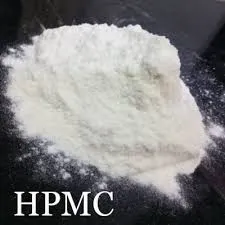
اکتبر . 21, 2024 22:13 Back to list
redispersible polymer powder hs code
Understanding Redispersible Polymer Powder and Its HS Code
Redispersible polymer powder (RDP) has gained significant importance in various industries due to its versatile applications. Widely utilized in construction materials, adhesives, and coatings, RDP serves as a key component that enhances the performance characteristics of these products. Understanding its nature, applications, and the relevant Harmonized System (HS) code is essential for manufacturers, importers, and exporters engaged in international trade.
What is Redispersible Polymer Powder?
RDP is a dry powdered form of polymer that, when mixed with water, can be redispersed to form a stable polymer emulsion. This process involves the spray-drying of polymer emulsions, resulting in a free-flowing powder. The main advantage of RDP is its ability to maintain the properties of the original emulsion, such as flexibility, adhesion, and water resistance, upon redispersion.
These powders commonly consist of various polymer types, including vinyl acetate-ethylene (VAE), styrene-acrylic (SA), and ethylene-vinyl acetate (EVA). The choice of polymer determines the specific properties and applications of the RDP. For instance, RDP derived from VAE is known for its excellent adhesion and water resistance, making it popular in tile adhesives and floor screeds.
Applications of Redispersible Polymer Powder
The applications of RDP are vast and include
1. Construction Industry RDP is extensively utilized in dry-mixed mortars, tile adhesives, plastering compounds, and decorative coatings. It enhances the workability, adhesion, and longevity of construction products.
redispersible polymer powder hs code

2. Adhesives and Sealants In the adhesive sector, RDP improves bonding strength and durability, making it suitable for various substrates, including wood, metal, and plastics.
3. Paints and Coatings The incorporation of RDP in paints helps improve the film's properties, providing better adhesion and flexibility while reducing water sensitivity.
4. Textiles RDP is also found in textile applications as a binder in non-woven fabrics, providing flexibility and durability.
HS Code for Redispersible Polymer Powder
The Harmonized System (HS) code is an internationally standardized system for classifying goods traded across borders. For redispersible polymer powder, the typical HS code falls under Chapter 39, which covers plastics and articles thereof. More specifically, the relevant HS code can often be classified under 3906, which pertains to other thermoplastic materials.
Understanding the correct HS code is crucial for compliance with international trade regulations, ensuring that products are correctly classified for tariff and trade purposes. It can also affect the import duties and taxes levied on the goods, making accurate classification imperative for businesses looking to optimize their supply chain costs.
Conclusion
Redispersible polymer powder plays a vital role in enhancing the performance of a range of products across several industries. Its ability to rehydrate and maintain essential properties makes it indispensable in construction and adhesives. Properly identifying the HS code for RDP is essential for effective trade practices, ensuring adherence to regulations while optimizing costs. As the global demand for high-quality construction materials continues to soar, awareness and understanding of RDP will remain critical for industry stakeholders.
-
Versatile Hpmc Uses in Different Industries
NewsJun.19,2025
-
Redispersible Powder's Role in Enhancing Durability of Construction Products
NewsJun.19,2025
-
Hydroxyethyl Cellulose Applications Driving Green Industrial Processes
NewsJun.19,2025
-
Exploring Different Redispersible Polymer Powder
NewsJun.19,2025
-
Choosing the Right Mortar Bonding Agent
NewsJun.19,2025
-
Applications and Significance of China Hpmc in Modern Industries
NewsJun.19,2025







